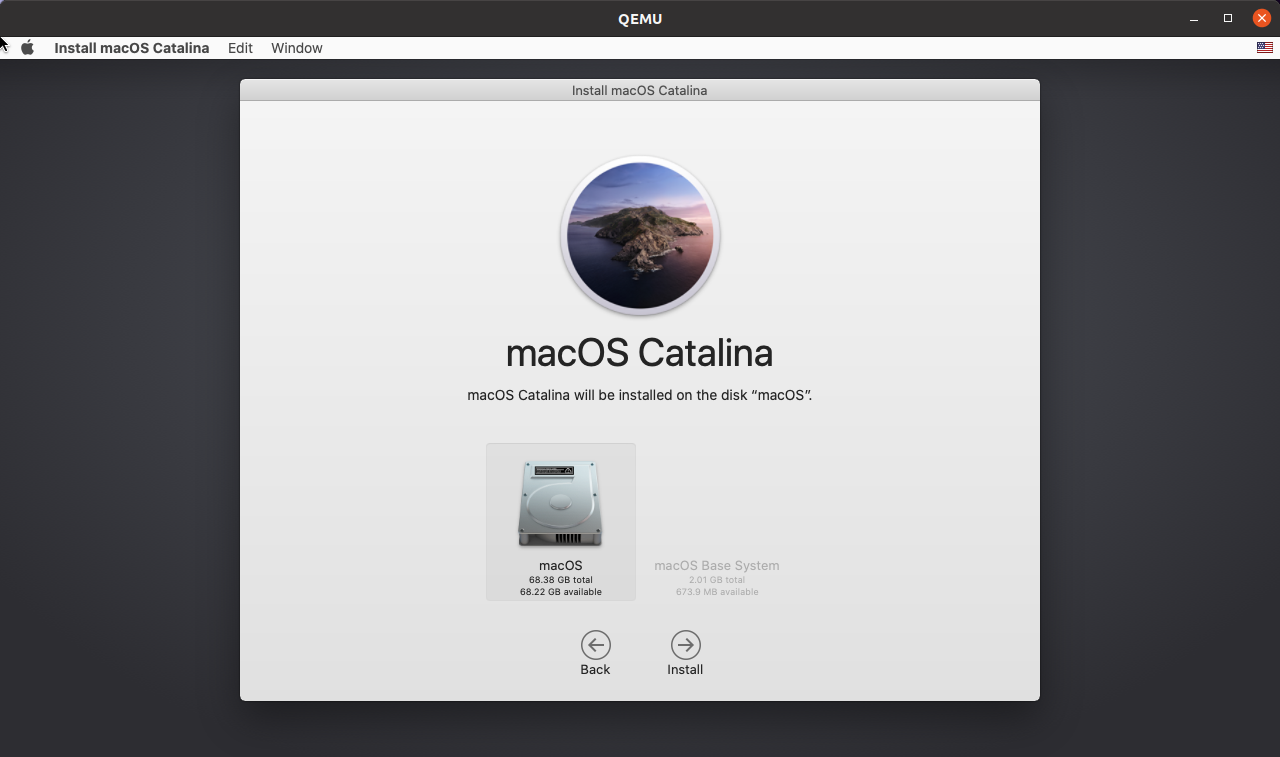

We’ll do the same for the disk that will hold the ISO to install the OS. Sudo VBoxManage storagectl "Ubuntu" -name "SAS Controller" -hostiocache on

Sudo VBoxManage storageattach "Ubuntu" -storagectl "SAS Controller" -port 0 -device 0 -type hdd -medium "Ubuntu.vdi" sudo VBoxManage storagectl "Ubuntu" -name "SAS Controller" -add sas -controller LSILogicSAS Usually this happens automatically when creating machines from the GUI, but you’ll have to manually create a SAS controller and attach it to the VM for the hard drive to work properly. Next is some more configuration for the hard drive.

sudo VBoxManage modifyvm "Ubuntu" -cpus 2
#HOW TO SET UP OS X VM FULL#
This is measured in threads, not full CPU cores. Sudo VBoxManage createhd -filename "Ubuntu.vdi" -size 32000 sudo VBoxManage modifyvm "Ubuntu" -memory 4096 Note that the hard drive is a virtual disk, and isn’t preallocated. We’ll go with 4 GB of RAM and 32 GB of HDD space, but these can both be expanded later. Give the machine some RAM and create a new hard drive. sudo VBoxManage createvm -name "Ubuntu" -ostype Ubuntu_64 -register To begin, we’ll create a new VM named “Ubuntu.” You can view a list of supported OS types with VBoxManage list ostypes. Removing this pack solved the issue: sudo VBoxManage extpack uninstall VNC Setting Up a VM Download it with wget: wget Īnd install it: sudo VBoxManage extpack install Oracle_VM_VirtualBox_Extension_Pack-5.2.42.extpackįor some reason, VRDE didn’t seem to work for us with the built in VNC extension pack installed. Head over to VirtualBox’s download page, and find the link for the extension pack for the version you’re running on. Because we’re setting up in headless mode, we’ll need a way to connect to the machine before SSH/RDP can be configured. You’ll want to make a note of the version that is installed though ( VBoxManage -v ), as you’ll need to install a few more things. If you do plan on sticking to the CLI, installation is fairly simple, as it’s available straight from apt: sudo apt-get install virtualbox You can still run VMs in headless mode to keep them running after you log out of the DE. The VirtualBox CLI is admittedly a bit unwieldy though, so if you’re just messing about on a home server and have a bit of RAM to spare, you could instead install a light desktop environment on your server and set up VirtualBox the normal way. Another solution would be QEMU, but VirtualBox is tried and tested, and is unbeatable for being free and open source. You might have used it before on a personal computer to set up a VM, but VirtualBox actually has a full command line interface and is fully usable from only a terminal, making it perfect for this use case.
#HOW TO SET UP OS X VM SOFTWARE#
VirtualBox is a free GUI-based virtualization software that runs as an app on your host OS (a Type 2 hypervisor). Installing VirtualBox and the VBox Extension Pack You won’t be able to run applications on the host OS, but you can easily virtualize Ubuntu Server or something and run the applications on top of the hypervisor. A hypervisor replaces your host OS, and is custom built for managing multiple virtual machines. If you’re planning on only using virtual machines, you might be interested in a hypervisor.

If you want to do the same thing on your own servers, either to run different operating systems or manage multiple environments, you can do so entirely from your terminal. Most cloud providers will rent virtual servers rather than actual hardware.


 0 kommentar(er)
0 kommentar(er)
